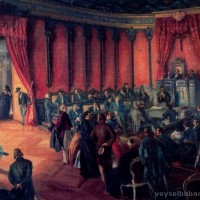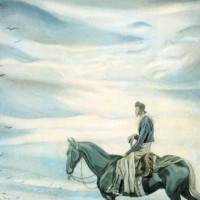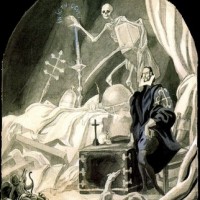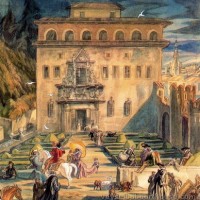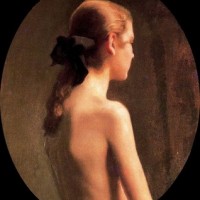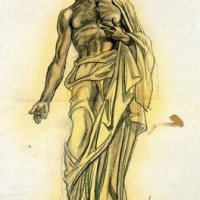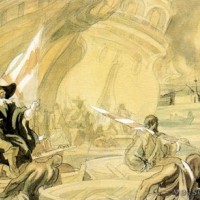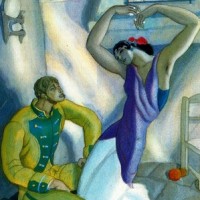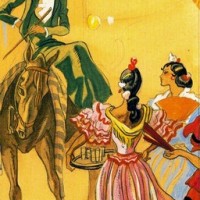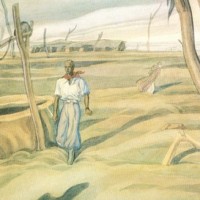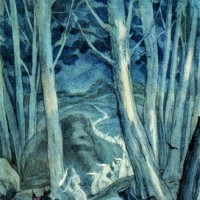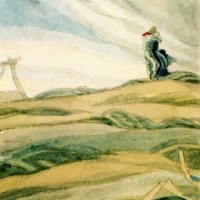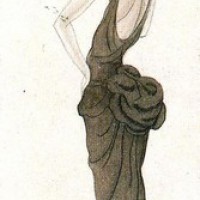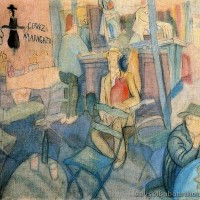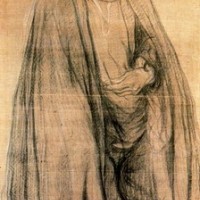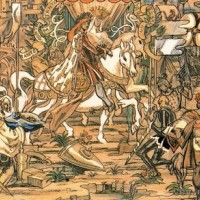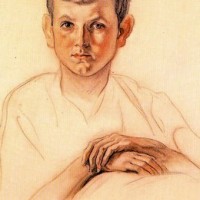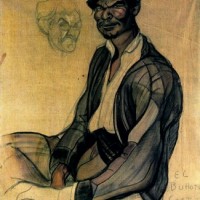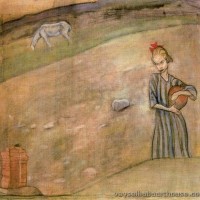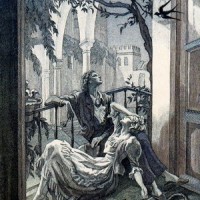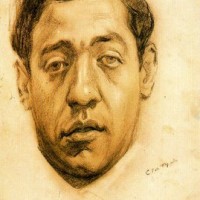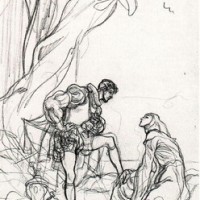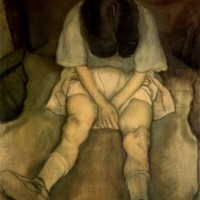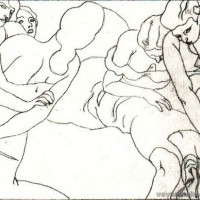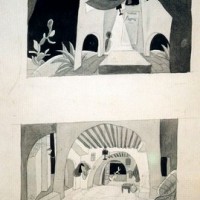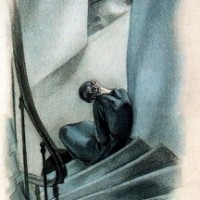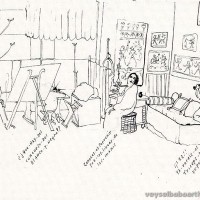- Home
- ABOUT US
- ABOUT VEYSEL BABA
- REDFOX ART HOUSE VIRTUAL TOUR
- MY LAST WILL TESTAMENT
- NOTES ON HUMANITY AND LIFE
- HUMAN BEING IS LIKE A PUZZLE WITH CONTRADICTIONS
- I HAVE A WISH ON BEHALF OF THE HUMANITY
- WE ARE VERY EXHAUSTED AS THE DOOMSDAY IS CLOSER
- NO ROAD IS LONG WITH GOOD COMPANY
- THE ROAD TO A FRIENDS HOUSE IS NEVER LONG
- MY DREAMS 1
- MY DREAMS 2
- GOLDEN WORDS ABOUT POLITICS
- GOLDEN WORDS ABOUT LOVE
- GOLDEN WORDS ABOUT LIFE
- GOLDEN WORDS ABOUT DEATH
- VEYSEL BABA ART WORKS
- SHOREDITCH PARK STORIES
- EXAMPLE LIVES
- ART GALLERY
- BOOK GALLERY
- MUSIC GALLERY
- MOVIE GALLERY
- Featured Article
- Home
- ART GALLERY
- Carlos Sáenz de Tejada
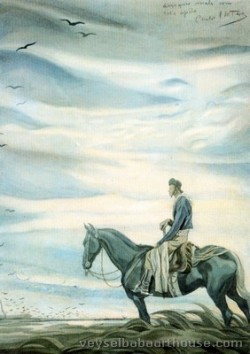
Carlos Sáenz de Tejada
Carlos Saenz de Tejada and Lezama ( Tangier , Morocco , 22 of June of 1897 - Madrid , 23 of February of 1958 ) was a painter, poster artist, costume designer , decorator and Spanish illustrator; identified with the artistic production of the Nationalist side in the Spanish Civil War . His style was eclectic, from the costumbrismo to the epic naturalist fascist aesthetic , occasionally including avant - garde experiments of character neocubist .
Family ancestry
He was the son of a diplomat Carlos Saenz de Tejada and Groizard 1 and Maria de Lezama González del Campillo ; his family comes from the old aristocracy or nobility of deeply rooted provinces in the Rioja Alavesa that since the crisis of the Old Regime in the first third of the nineteenth century, had lost the preeminence of their social status rentiers, he is forced to join To the exercise of a profession. The Saenz de Tejada opted, preferably, for the consular and diplomatic career, law, journalism, literature or even politics.
Training
He began his apprenticeship in Oran with Daniel Cortes (1908), he moved to Madrid in 1911, where he entered the workshop of José María López Mezquita , then led by Fernando Alvarez de Sotomayor . In 1916 he passed the Real Academia de Bellas Artes de San Fernando , taking classes among others by Joaquin Sorolla . very young illustrations published in La Libertad , Sphere , New World , Chics , Outdoors , Revista de Occidente , Aspas and Alfar . He was selected for the Salon d'Automne of 1924 (which also exposed José Gutiérrez Solana and Pablo Picasso ) and the Exhibition of Iberian Artists 1925 ( Parque del Retiro in Madrid).
The Board for Advanced Studies sent him to Paris to study mural painting . There he worked intermittently in the period 1926-1935, illustrating for Robe , Femina , Jardin des Modes , Harper's Bazaar and Vogue ; in addition to designing the posters dance show " La Argentinita " and scenographic montages decorated Carmen (opera) and Ravel 's Bolero . He worked at several publishing houses such as La Pleiade , Chiffrin or Draegger , and collaborated with publications in London, Berlin and New York. His figurines and fashion drawings spread the very stylized and sporty feminine image of modernity in the thirties; In a manner similar to what Rafael de Penagos did at the time.
In 1935 he returned to Madrid, where shows for ABC and White and Black and designed a poster for the Circulo de Bellas Artes .
The fact spend summer holidays at his family home in Laguardia (Álava), where it had been named adoptive son in 1938 (some biographies give by born there), and his sympathies for the carlismo , they made obvious their adherence to blow State July 1936 .
War and postwar
During the war he achieved great artistic prominence, from the time the General Jordana found drawings of war theme for the British magazine Sphere (had also sent drawings to the French magazine L'Illustration ). Incorporated into service Press and Propaganda of the National Army in Salamanca, his work became an iconographic reference in the rebel side; and used to illustrate books of paramount importance: the Poem of the beast and the angel of José María Pemán (1938) and the History of the Spanish Crusade of Joaquín Arrarás (1940-1944).
In the postwar continues his work in graphic arts, publications illustrating Delegations Press and Propaganda ( Vertex Magazine of San Sebastian, 1937-1943); restores works of art for the Provincial Council of Alava and develops an extensive program of mural painting in various public buildings in Vitoria, in the Valley of the Fallen and the Institute of Agricultural Research of the Complutense University of Madrid . Each year between 1939 and 1950 illustrated calendar Central Bank . He held the artistic direction of fashion in Spain (1943-1947), and the Editorial Fournier in 1948.
Obtained professorship of mural painting at the School of Arts and Crafts in Madrid (1941-1950) and professor of illustration at the School of Fine Arts of San Fernando (1942-1958).
During 1947 he makes illustrations of books like Don Juan Tenorio of Jose Zorrilla , The animated forest of Wenceslao Fernández Flórez and Zogo-Ibi of Enrique Larreta . This same year he received the Gold Medal at the National Exhibition of Decorative Arts .
In 1949 he won the Drawing Prize in the «Competition of Drawings and Engravings of Military Scenes and Books».
In 1950 illustrates Vested interests of Jacinto Benavente , receives the Silver Medal of Fine Arts and was appointed president of the Association of Illustrators .
In 1951 works in sketches and costumes for the theater Spanish and organizes with the Association of Illustrators, the "I Illustrators Hall."
In 1955 he received the First Medal at the National Exhibition of Fine Arts and was appointed member of the Board of Culture of the Provincial Council of Alava .
In 1957 he illustrated the Silversmith and I of Juan Ramon Jimenez .
Transcendence
After dedicating an anthological exhibition to him in Vitoria in 1967, the work of Sáenz de Tejada went through a time of forgetfulness, intensified with the arrival of the democracy. Since the beginning of the twenty-first century it has received, again, a certain recognition.
The best collection of his work is owned by the Caja Vital .
The City Council of Vitoria-Gasteiz dedicated to him in 1977 a street between Abendaño and Bustinzuri.
